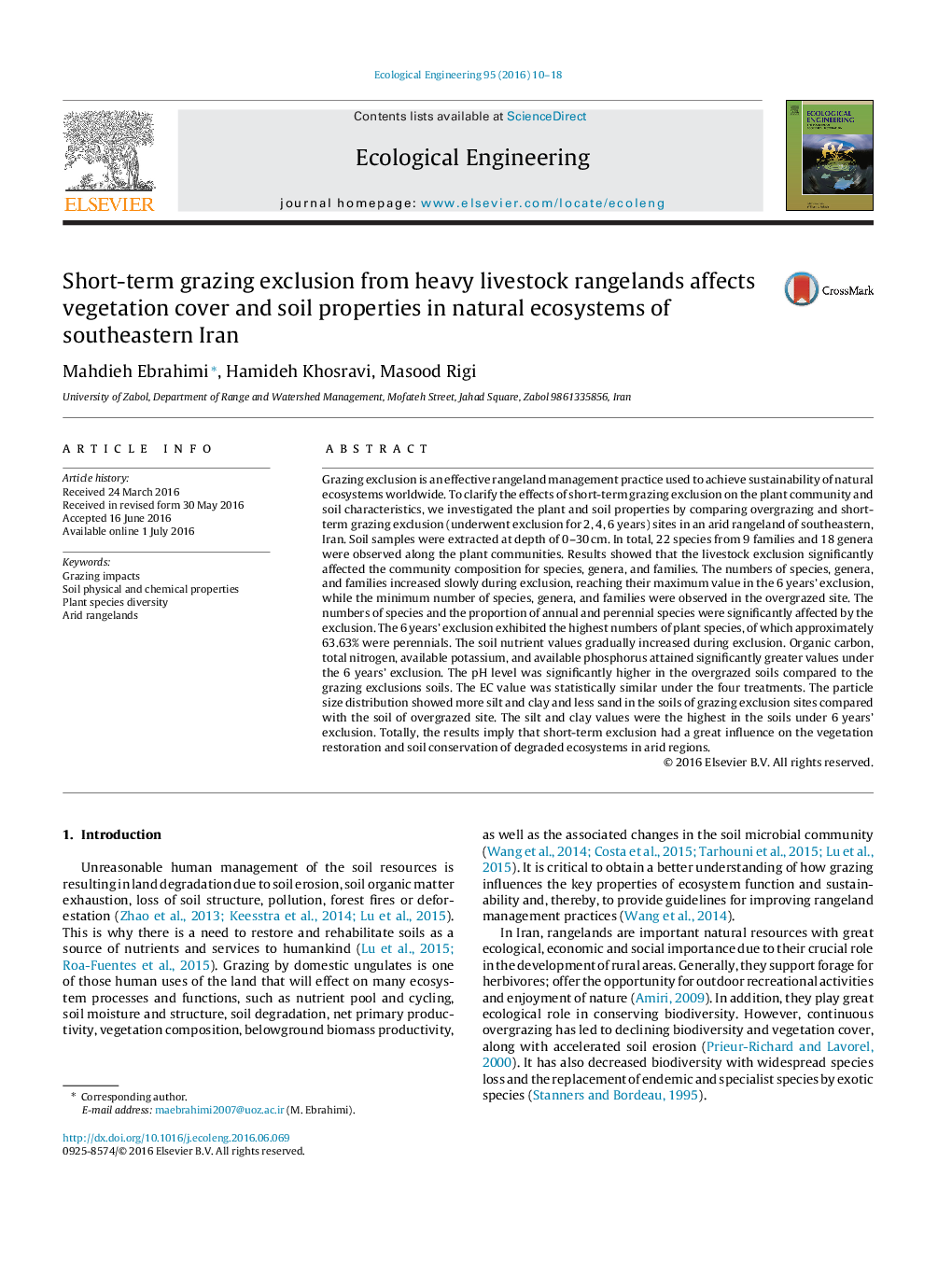| Article ID | Journal | Published Year | Pages | File Type |
|---|---|---|---|---|
| 4388421 | Ecological Engineering | 2016 | 9 Pages |
•The numbers of families, genera and species increased slowly during exclusion.•The species richness, diversity, density and vegetation cover increased slowly during exclusion.•Soil properties changes were more pronounced under the 6 years’ exclusion.•Short-term exclusion increased the quantity of silt and clay content and soil nutrient levels.•The soil pH decreased in the soil surface layer compared with the soils of overgrazed rangeland.
Grazing exclusion is an effective rangeland management practice used to achieve sustainability of natural ecosystems worldwide. To clarify the effects of short-term grazing exclusion on the plant community and soil characteristics, we investigated the plant and soil properties by comparing overgrazing and short-term grazing exclusion (underwent exclusion for 2, 4, 6 years) sites in an arid rangeland of southeastern, Iran. Soil samples were extracted at depth of 0–30 cm. In total, 22 species from 9 families and 18 genera were observed along the plant communities. Results showed that the livestock exclusion significantly affected the community composition for species, genera, and families. The numbers of species, genera, and families increased slowly during exclusion, reaching their maximum value in the 6 years’ exclusion, while the minimum number of species, genera, and families were observed in the overgrazed site. The numbers of species and the proportion of annual and perennial species were significantly affected by the exclusion. The 6 years’ exclusion exhibited the highest numbers of plant species, of which approximately 63.63% were perennials. The soil nutrient values gradually increased during exclusion. Organic carbon, total nitrogen, available potassium, and available phosphorus attained significantly greater values under the 6 years’ exclusion. The pH level was significantly higher in the overgrazed soils compared to the grazing exclusions soils. The EC value was statistically similar under the four treatments. The particle size distribution showed more silt and clay and less sand in the soils of grazing exclusion sites compared with the soil of overgrazed site. The silt and clay values were the highest in the soils under 6 years’ exclusion. Totally, the results imply that short-term exclusion had a great influence on the vegetation restoration and soil conservation of degraded ecosystems in arid regions.
